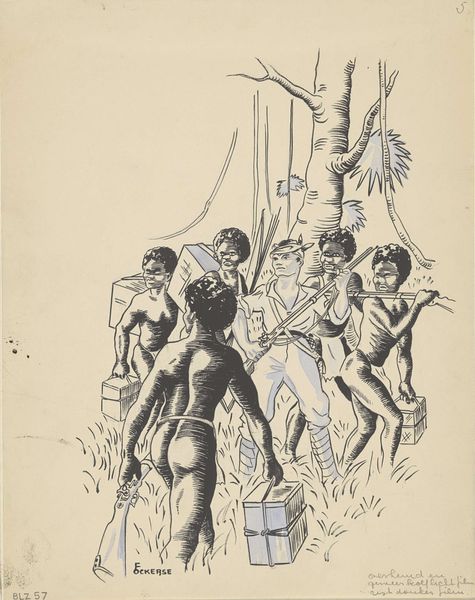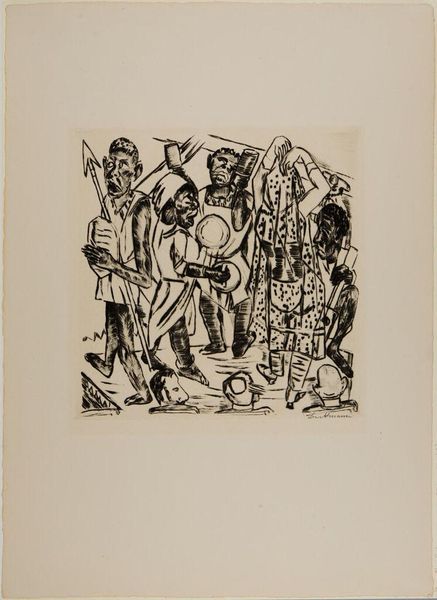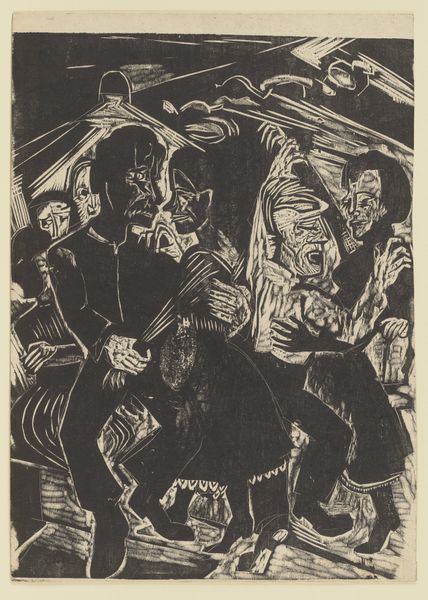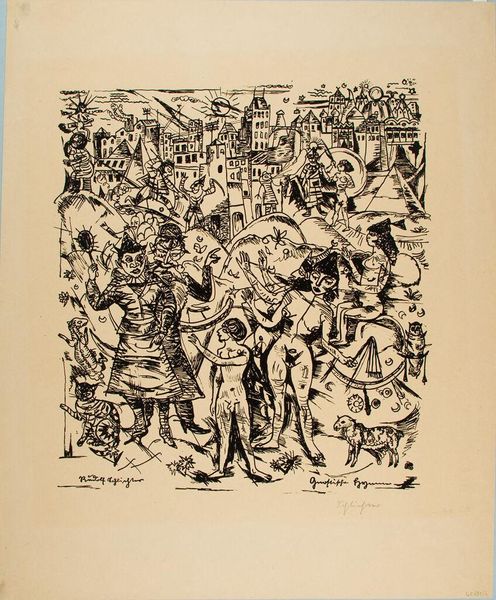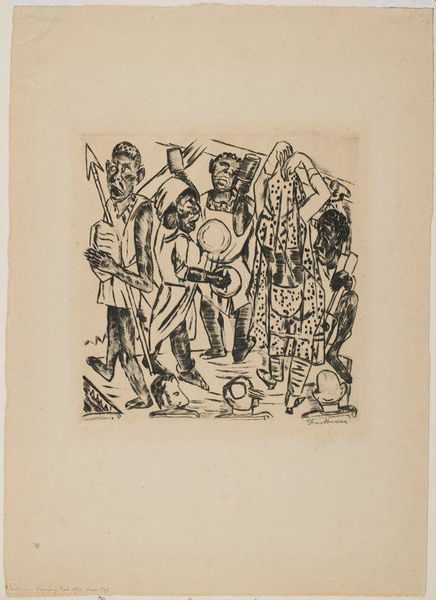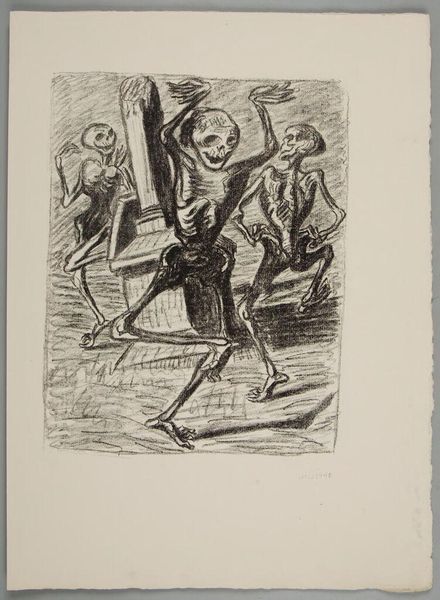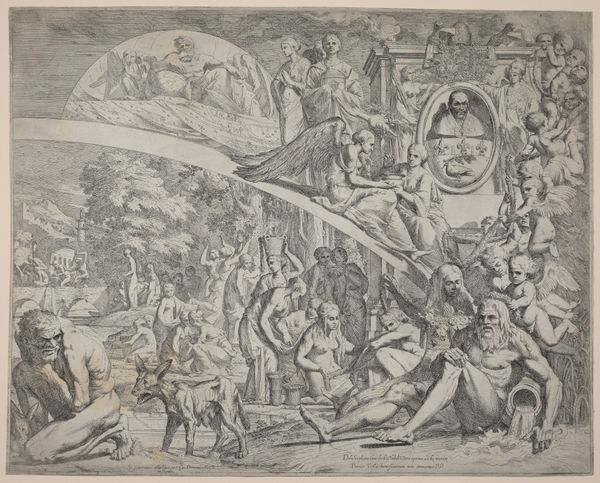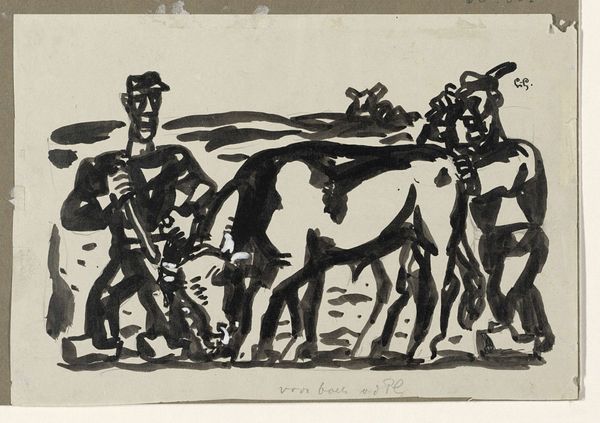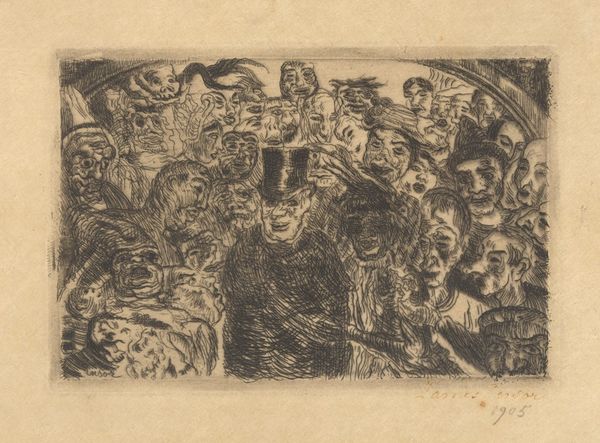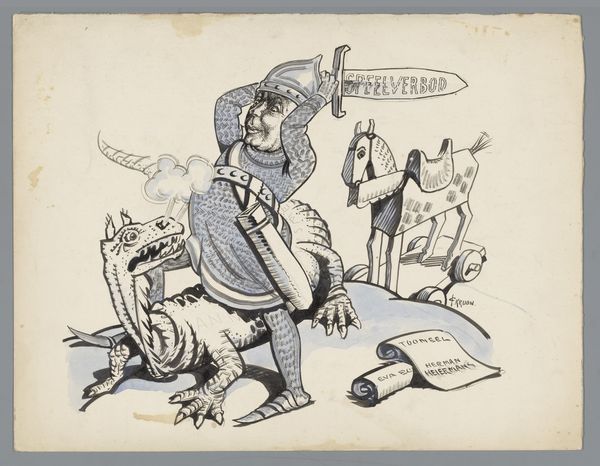
drawing, ink, pen
#
african-art
#
drawing
#
ink drawing
#
quirky sketch
#
narrative-art
#
pen sketch
#
cartoon sketch
#
figuration
#
personal sketchbook
#
ink
#
ink drawing experimentation
#
pen-ink sketch
#
sketchbook drawing
#
pen
#
sketchbook art
#
fantasy sketch
Dimensions: height 275 mm, width 216 mm
Copyright: Rijks Museum: Open Domain
Editor: So, here we have F. Ockerse's "Nieuw-Guinees volk dansend rond een totempaal," an ink drawing from before 1936. The scene is vibrant, but something about the figures' expressions feels... exaggerated, maybe? What do you see in this piece beyond the surface level? Curator: It's interesting that you pick up on that exaggeration. Given the historical context, we need to consider the public role of this type of imagery. How do you think illustrations like this functioned in Europe at the time? Editor: Well, I suppose most people wouldn’t have first-hand experience with Papua New Guinean culture, so this image might have been their main reference point. Possibly shaping their perceptions…potentially inaccurately? Curator: Exactly. Consider the power dynamics inherent in who is creating and controlling these images. The artist, a European, is depicting people from Papua New Guinea. This piece is a product of its time and of colonialism's visual language. Notice the figures dancing around what's labelled as a "totem pole". Editor: It’s making me question how the term "totem pole," or even "dance," is being applied here. Whose definition are we using, and what are we losing in translation? Is this a record of something seen, or something imagined based on skewed reports? Curator: Those are vital questions. We need to interrogate the power dynamics embedded within the representation itself. It raises important points about ethnography, cultural exchange, and how "foreign" cultures were represented in popular media. The artwork's use and reception can inform us about the colonial gaze during the first half of the 20th century. Editor: That makes me rethink my initial impression. I came in seeing a dynamic illustration, and now I'm questioning its very foundation and the social structures it reflects. Curator: Precisely. By examining these artworks through a historical lens, we can gain critical insights into the past and challenge ingrained perspectives in the present.
Comments
No comments
Be the first to comment and join the conversation on the ultimate creative platform.

